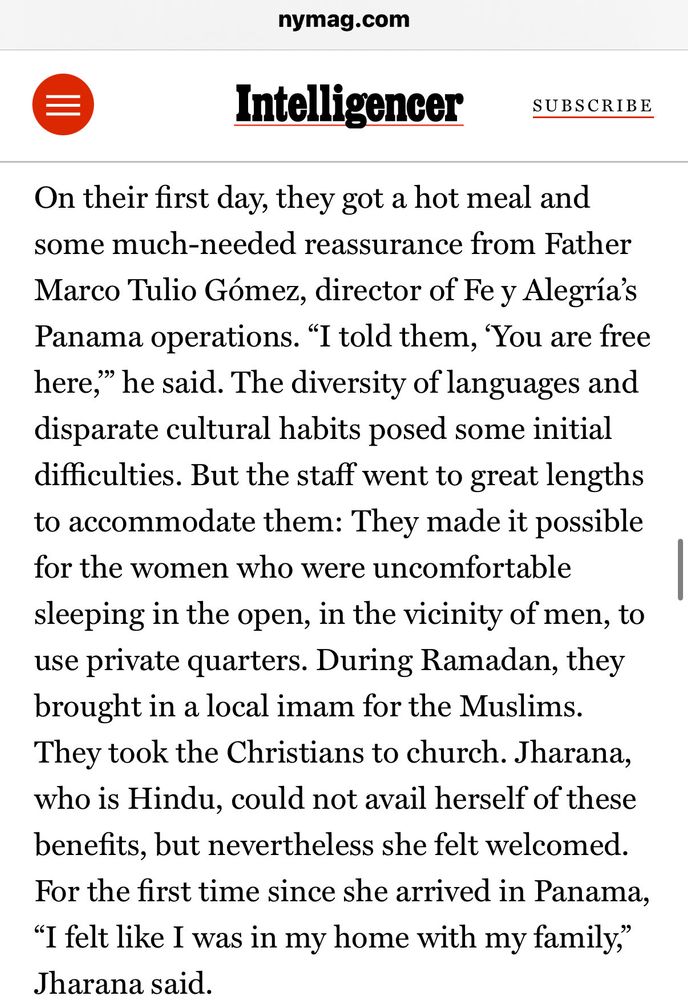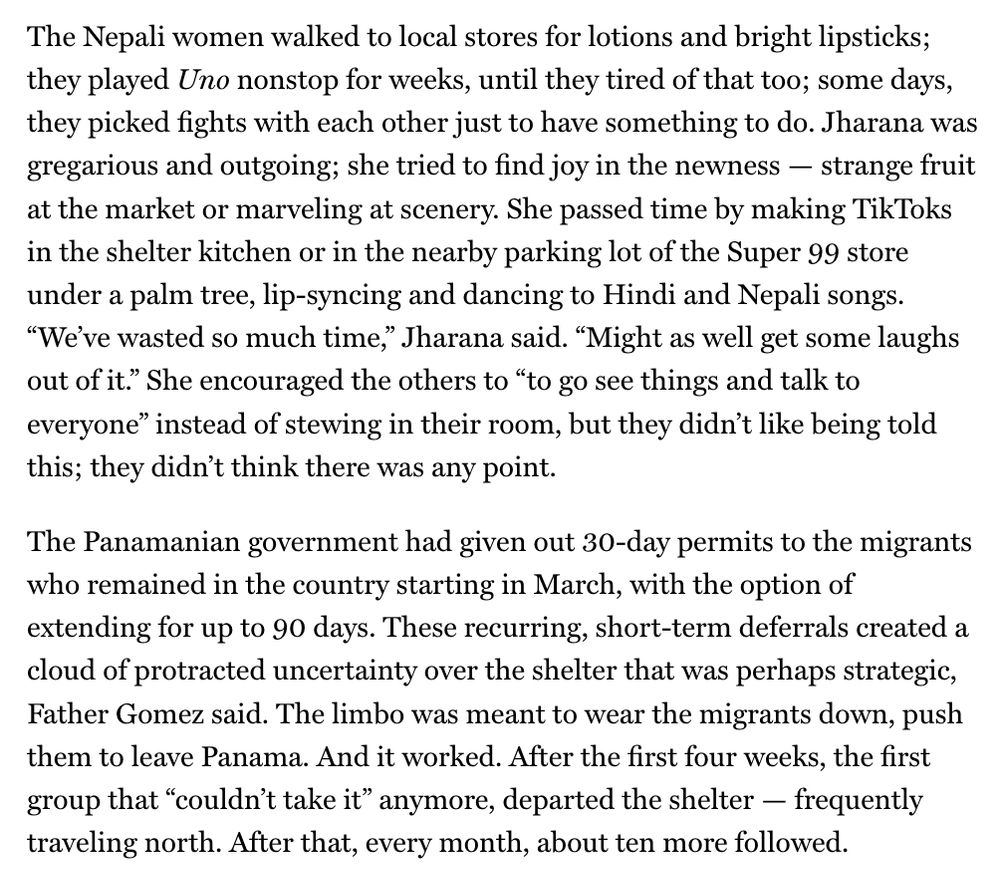Tanvi Misra
@tanvi.bsky.social
3.8K followers
1.8K following
440 posts
writer +/ journo covering migration, cities, justice etc. words in The Nation, Politico Mag, The Baffler, The Nation, The New Republic, etc. teaching @ CUNY’s Newmark School of Journalism. tanvim.05 on signal. Tanvim27 on insta.
Posts
Media
Videos
Starter Packs
Reposted by Tanvi Misra



















![An independent psychologist evaluated Laura in June and found her symptoms “far exceed[ed] the threshold” for depression, anxiety, and post traumatic stress disorders, and had “worsened considerably” over her year and a half in detention. Health records show that Laura’s chronic conditions—high blood pressure and a preexisting gastric ulcer—were inadequately treated. ICE treats you like a “living ghost,” she says from detention. “They don’t care if you die.” She cries frequently, during almost every phone conversation. She worries about the future of her children, currently in the care of a family friend, and how her prolonged detention has put immense financial strain on her sister in Canada. “It just goes on and on,” she says.](https://cdn.bsky.app/img/feed_thumbnail/plain/did:plc:usc3pf73iguzg3rcj3cuyoqs/bafkreidyfzkm3qnwwsosxonm5w6ixje35pkyvcrpbsdmzpg57ek4ahxccy@jpeg)
